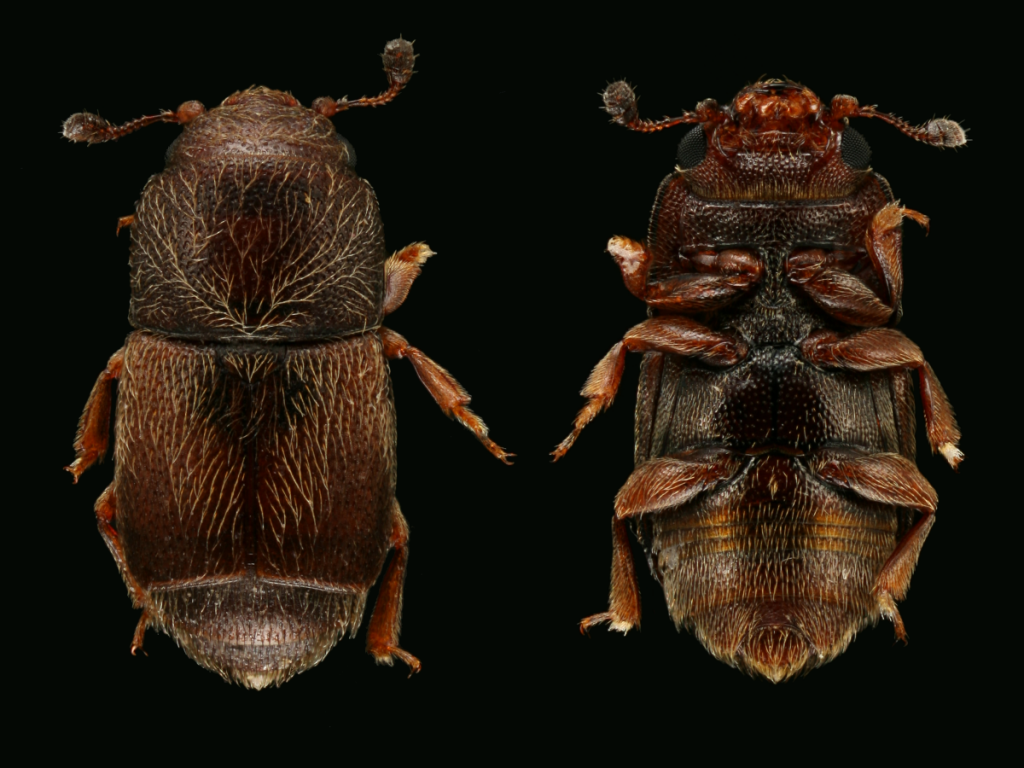Species Fact Sheet
Carpophilus dimidiatus (Fabricius, 1792) dimidiatus complex*
Diagnosis: Carpophilus dimidiatus is a member of the dimidiatus complex. There are currently no known external characters to reliably distinguish members of the dimidiatus complex from one another.
Distribution: Carpophilus dimidiatus is a cosmopolitan species. Thought to be native to Asia, it is now spread to every continent.
Biology: Adults of C. dimidiatus can be found feeding on most fruits and vegetables. This species is also known to infest stored food products (Hinton 1945) and is considered a major pest of corn in the United States. For an extensive list of habits see Hinton (1945), Dobson (1954), and Connell (1975). It has been associated with alfatoxin contamination in corn (Hell et al. 2000). Develops from egg to adult in 21 to 15 days at 80°F and 90°F respectively (Lindgren and Vincent 1953). Adults illustrated and described by Connell (1977), Dobson (1954), and Ewing and Cline (2005). Larvae described and maxilla, mandible, and end of abdomen illustrated by Hinton (1945).
References:
Connell, W. A. (1975) – feeding habits
Dobson, R. M. (1954) – feeding habits, adult illustrations, and key to species
Ewing, C. P. and Cline, A. R. (2005) – adult illustrations and description
Hinton, H. E. (1945) – feeding habits, distribution, adult and larvae description, partial larvae illustrations
Hell et al. (2000) – association with alfatoxin contamination in corn
Lindgren, D. and L. Vincent (1953) – Development
HOW TO CITE THIS WORK:
DiLorenzo, C.L., G.S. Powell, A.R. Cline, and J.V. McHugh (2021) Carpophiline-ID, a taxonomic web resource for the identification of Carpophilinae (Nitidulidae) of eastern North America. (vers. 01.19.2021) University of Georgia, retrieved from https://site.caes.uga.edu/carpophiline-id/
